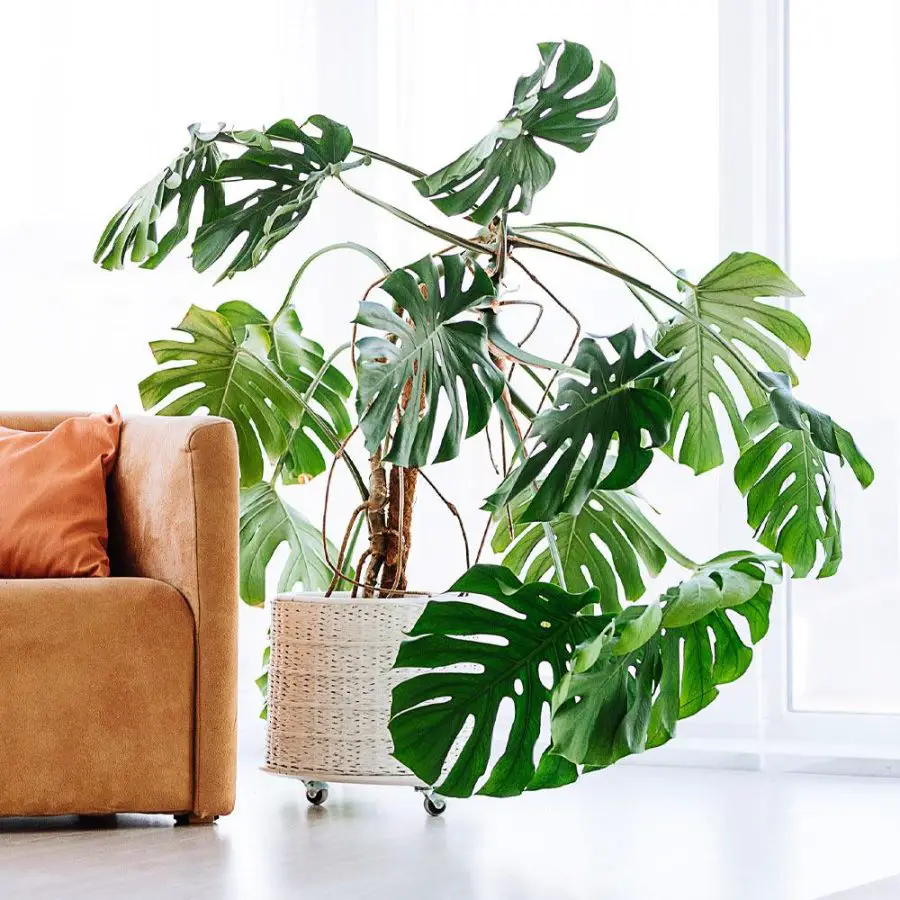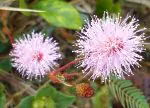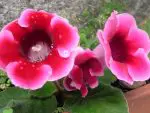This post contains affiliate links. If you buy something from one of our links we may earn a commission. Thanks
Discover the Different Types of Monstera Plants in our fun and informative guide as we take a deep dive that’s perfect for both newbies and experienced plant lovers!
Some different types of Monstera plants are Monstera Deliciosa, Monstera Adansonii, Monstera Borsigiana, and Monstera Obliqua. Each type has its own unique leaf patterns and growth habits, but all thrive in indirect light and well-drained soil. These popular houseplants are known for their striking, holey leaves.
Learn how to make your indoor jungle thrive with these beauties!
Welcome, fellow plant enthusiasts! Today, we’re diving into the captivating world of the Different Types of Monstera Plants.
Those gorgeous, statement-making tropical beauties have taken the houseplant community by storm.
Whether you’re a seasoned green thumb or a budding plant newbie, our guide will introduce you to the diverse Monstera varieties that can turn your home into a lush, urban jungle.
So, let’s embark on this leafy adventure together and learn all about these stunning foliage superstars!
You can buy many different monsters varieties on Amazon
An Intro To The Different Types of Monstera Plants
Are you ready to explore the fantastic realm of the Different Types of Monstera Plants?
We’ve got a treat for you! In this guide, we’ll walk you through the amazing variety of Monstera species that can liven up any space with their unique charm.
Whether you’re just beginning your plant journey or a full-fledged plant aficionado, we’ve got something for everyone.
So, grab your favorite cuppa and settle in as we take a delightful stroll through the leafy wonders of Monstera plants!
Monstera Marvels: A Brief Overview
Monstera plants, affectionately known as the “Swiss Cheese” plants, are captivating tropical flora native to Central and South America.
These stunners are famous for their large, distinct leaves adorned with natural holes or splits, giving them an unmistakable, eye-catching appearance.
There’s no denying that Monsteras are a must-have for any plant enthusiast looking to make a statement in their indoor green space.
The Plant World’s Superstars: Popularity and Significance
Over the past few years, Monstera plants have skyrocketed in popularity, becoming an iconic symbol of the houseplant movement.
Their striking appearance, coupled with their relatively low-maintenance nature, has made them a go-to choice for plant lovers everywhere.
Monsteras’ ability to purify the air and bring a sense of calm and serenity to any space only adds to their allure, further cementing their status as a beloved addition to homes and offices alike.
Know Your Monsteras: The Importance of Understanding the Different Types
While many people may be familiar with the classic Monstera deliciosa, there’s a whole world of Monstera varieties waiting to be discovered!
Each type has its unique features, growth habits, and care requirements, making it essential for plant parents to understand these differences.
By familiarizing yourself with the various types of Monstera plants, you can choose the perfect addition to your indoor jungle, set realistic expectations for growth, and provide the best possible care for your new leafy friend.
Plus, you’ll have tons of fun learning about these amazing specimens and expanding your plant knowledge along the way!
Monstera deliciosa
Get ready, plant pals, because we’re about to introduce you to the fabulous Monstera deliciosa, the star of the Monstera world!
This popular tropical beauty, often called the “Swiss Cheese Plant,” has become a household name thanks to its impressive, split leaves and striking presence.
Whether you’re a seasoned plant collector or just starting your indoor jungle journey, the Monstera deliciosa is an excellent choice that brings a touch of the tropics to any space.
You can buy Monstera deliciosa here
So, let’s dive in and learn all about this beloved classic and how to help it thrive in your home!
| Mature Height: | 4-6 ft. |
| Mature Width: | 3 ft. |
| Sunlight: | Indirect Light |
| Growth Rate: | Fast |
| Botanical Name: | Monstera deliciosa |
| Does Not Ship To: | AZ |
| Grows Well In Zones: | Indoors |
Getting to Know Monstera Deliciosa: Description and Key Features
Spectacular Split Leaves
One of the standout features of Monstera deliciosa is its remarkable split leaves.
As the plant matures, the leaves develop unique fenestrations or splits, which can extend from the leaf edges to the central vein.
This distinct appearance not only adds an element of visual interest but also serves a purpose in nature, allowing the leaves to withstand heavy rain and winds in their native tropical environment.
Size and Growth Habit
Monstera deliciosa is known for its impressive size and growth habit.
In their natural habitat, these plants can grow up to 30 feet tall, using aerial roots to climb trees and absorb nutrients.
While they won’t reach that height indoors, they can still make a grand statement in your home, growing up to 8-10 feet tall if given proper support like a moss pole or trellis.
Marvelous Monstera Varieties
The Monstera deliciosa ‘Borsigiana’ is a smaller, more manageable variety of the classic Monstera deliciosa.
This cultivar features similar split leaves, but with a more compact growth habit, making it a great option for those with limited space or who prefer a more petite plant.
Monstera deliciosa ‘Variegata’
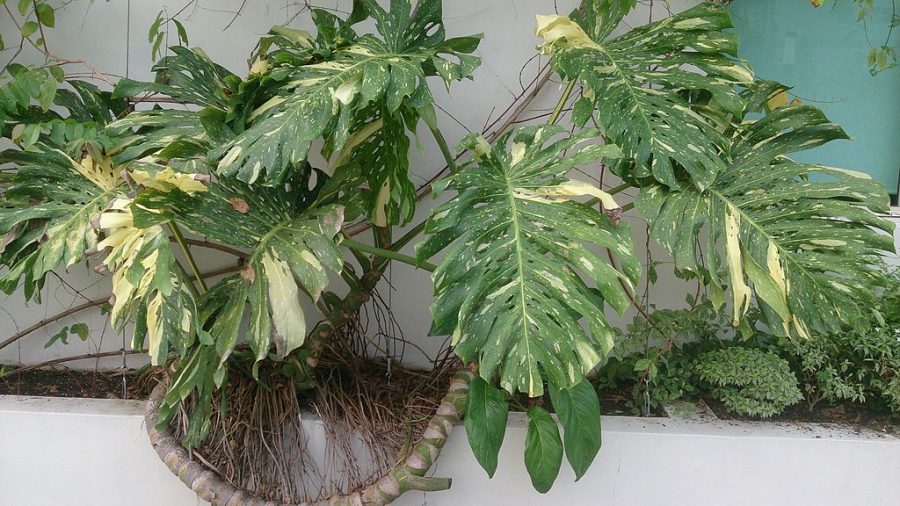
The Monstera deliciosa ‘Variegata’ is a showstopper, boasting stunning leaves with patches of white or cream variegation.
This eye-catching variety is highly sought after and adds a striking contrast to any plant collection.
Keep in mind that it may require slightly different care compared to its non-variegated counterparts due to the reduced chlorophyll content in its leaves.
Monstera albo
Monstera albo, short for Monstera deliciosa ‘Albo-Variegata’, is another gorgeous variegated variety.
This beauty features dark green leaves marbled with irregular patches of pure white.
Its striking appearance and rarity make it a prized possession among plant collectors.
Cultivating a Happy Monstera: Care Tips and Requirements
Light
Monstera deliciosa thrives in bright, indirect light. Direct sunlight can scorch their leaves, so it’s best to provide filtered sunlight or place your plant near an east or north-facing window.
Water
When it comes to watering, Monstera deliciosa prefers consistently moist soil but doesn’t appreciate sitting in water. Allow the top inch or two of the soil to dry out between waterings to prevent root rot.
Soil
A well-draining, peat-based potting mix is ideal for Monstera deliciosa. Coco coir and perlite are another more environmentally friendly mix.
This ensures that your plant’s roots have access to the moisture and nutrients they need without becoming waterlogged.
Fertilizer
To support healthy growth, feed your Monstera deliciosa with a balanced liquid fertilizer diluted to half-strength every 4-6 weeks during the growing season.
Reduce fertilizing during the winter months when the plant’s growth slows down.
Pruning
Pruning is essential to maintain your Monstera deliciosa’s shape and encourage bushier growth.
Regularly remove any yellow or damaged leaves, and trim back long vines to promote a fuller appearance.
Don’t forget to use clean, sharp pruning shears to prevent the spread of disease!
Monstera adansonii
Plant enthusiasts, prepare to fall head over heels for the enchanting Monstera adansonii, affectionately known as the “Swiss Cheese Vine”!
This charming relative of the Monstera deliciosa is famous for its delicate, fenestrated leaves that add a touch of whimsy to any indoor space.
Perfect for hanging baskets or letting them trail off a bookshelf, the Monstera adansonii is a versatile gem that brings a playful, tropical vibe to your home.
Join us as we delve into the captivating world of this delightful plant and learn how to keep it happy and healthy!
| Mature Height: | 6-8 ft. |
| Mature Width: | 4 ft. |
| Sunlight: | Indirect Light |
| Growth Rate: | Fast |
| Botanical Name: | Monstera adansonii |
| Does Not Ship To: | AZ |
| Grows Well In Zones: | Indoors |
Buy your Monsters Adonsonii here
Unveiling Monstera Adansonii: Description and Key Features
Fascinating Fenestrated Leaves
Monstera adansonii boasts mesmerizing fenestrated leaves, with charming oval-shaped holes that lend the plant its nickname, “Swiss Cheese Vine.”
These captivating leaves not only make this plant a visual treat, but they also play a functional role in nature, allowing the plant to withstand the heavy rainfall of its tropical origins.
A Smaller Monstera Delight
Compared to its larger cousin, Monstera deliciosa, the Monstera adansonii is more compact in size, making it a fantastic choice for smaller spaces or for those who prefer a more manageable plant.
With its vining growth habit, it can be trained to climb, cascade from hanging baskets, or drape elegantly from a shelf, offering versatility and charm to any room.
Monstera Adansonii Varieties to Adore
Monstera adansonii ‘Narrow Form’
The Monstera adansonii ‘Narrow Form’ features slender, elongated leaves with more closely spaced fenestrations.
This variety is perfect for those who appreciate the plant’s signature holes and want a slightly more delicate appearance.
Monstera adansonii ‘Wide Form’
As the name suggests, the Monstera adansonii ‘Wide Form’ showcases broader leaves with larger, more dramatic fenestrations.
This variety makes a stunning statement with its bold leaf shape and distinctive Swiss cheese-like holes.
Monstera borsigiana
Monstera borsigiana, often mistaken as a separate species, is actually a variety of Monstera adansonii.
It features similar fenestrated leaves but with a slightly faster growth rate and a more compact form, making it an excellent option for smaller spaces or for those who want a quicker-growing plant.
Caring for Your Monstera Adansonii: Tips and Requirements

Lighting Requirements
Monstera adansonii thrives in bright, indirect light. Avoid direct sunlight, which can damage the leaves.
Placing your plant near an east or north-facing window is ideal for providing the right amount of light.
Water Requirements
Consistent moisture is key for a happy Monstera adansonii. Allow the top inch of soil to dry out between waterings to prevent overwatering and root rot.
Be sure to adjust your watering schedule based on seasonal changes and the plant’s needs.
Soil
A well-draining, peat-based potting mix is perfect for Monstera adansonii. This type of soil ensures that the plant’s roots have access to the moisture and nutrients they need while preventing waterlogging.
Fertilizer
To support healthy growth, feed your Monstera adansonii with a balanced liquid fertilizer diluted to half-strength every 4-6 weeks during the growing season.
Reduce fertilizing during the winter months when the plant’s growth slows down.
Pruning
Regular pruning helps maintain your Monstera adansonii’s shape and encourages bushier growth.
Remove any yellow or damaged leaves, and trim back long vines to promote a fuller appearance.
Always use clean, sharp pruning shears to prevent the spread of disease.
Monstera siltepecana
Plant lovers, it’s time to meet the enchanting Monstera siltepecana – a lesser-known, yet utterly captivating addition to the Monstera family!
This lovely, vining plant is known for its stunning silver-tinged leaves, adding a touch of elegance and shimmer to any indoor space.
Perfect for draping from a hanging basket or climbing up a moss pole, Monstera siltepecana is a delightful gem that will elevate your home’s tropical vibe.
So, let’s dive into the alluring world of this gorgeous plant and learn how to care for it like a pro!
Meet Monstera Siltepecana: Description and Key Features
Captivating Silver Foliage
Monstera siltepecana stands out from other Monstera varieties with its unique, silver-tinged foliage.
The leaves are adorned with a subtle, iridescent sheen, which gives the plant an elegant, almost ethereal appearance.
This shimmering effect is bound to add an extra touch of charm and sophistication to your indoor jungle.
Vining Growth Habit
Much like its Monstera cousins, the siltepecana exhibits a vining growth habit, making it a versatile addition to your plant collection.
It can be trained to climb a support structure like a moss pole or trellis, or allowed to cascade gracefully from a hanging basket or shelf, creating a stunning display of its alluring silver foliage.
Mastering Monstera Siltepecana Care: Tips and Requirements
Lighting
To keep your Monstera siltepecana happy and healthy, provide it with bright, indirect light.
Direct sunlight can cause the delicate silver sheen on the leaves to fade, so ensure your plant receives filtered sunlight or place it near an east or north-facing window.
Water
Monstera siltepecana prefers consistently moist soil but doesn’t appreciate sitting in water.
Allow the top inch or two of the soil to dry out between waterings to prevent overwatering and potential root rot issues.
Soil
A well-draining, peat-based, or coco-based potting mix is perfect for Monstera siltepecana.
This type of soil ensures that the plant’s roots have access to the moisture and nutrients they need while preventing waterlogging.
Fertilizer
To support your Monstera siltepecana’s growth, feed it with a balanced liquid fertilizer diluted to half-strength every 4-6 weeks during the growing season.
Reduce fertilizing during the winter months when the plant’s growth slows down.
Pruning
Regular pruning helps maintain your Monstera siltepecana’s shape and encourages bushier growth.
Remove any yellow or damaged leaves, and trim back long vines to promote a fuller appearance.
Always use clean, sharp pruning shears to prevent the spread of disease and ensure a healthy, thriving plant.
Monstera obliqua
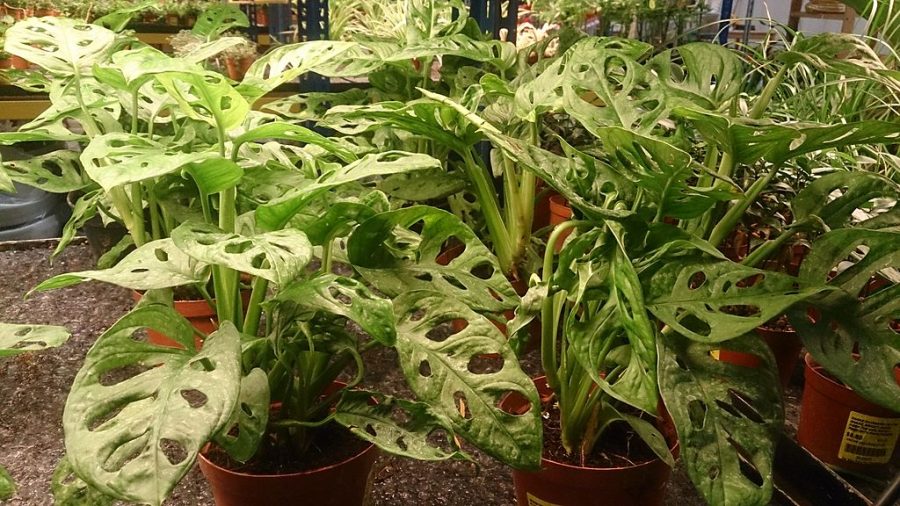
Get ready, fellow plant enthusiasts, to discover the elusive and highly sought-after Monstera obliqua!
This rare gem in the Monstera family is known for its striking, paper-thin leaves adorned with delicate fenestrations.
Often referred to as the “Swiss Cheese Vine” like its cousin Monstera adansonii, this plant adds a touch of elegance and intrigue to any collection.
So, join us as we explore the fascinating world of Monstera obliqua and learn how to give this captivating plant the tender love and care it deserves!
Delving into Monstera Obliqua: Description and Key Features
A Rare and Sought-After Treasure
Monstera obliqua is a highly coveted plant among collectors due to its rarity and unique appearance.
This enchanting plant is not commonly found in the market, making it a prized possession for those lucky enough to get their hands on one.
Delicate, Highly Fenestrated Leaves
The standout feature of Monstera obliqua is its delicate, highly fenestrated leaves. These paper-thin leaves showcase intricate fenestrations that create a stunning lacy effect.
The plant’s distinctive appearance adds an element of refinement and sophistication to any plant collection.
Expert Care for Monstera Obliqua: Tips and Requirements
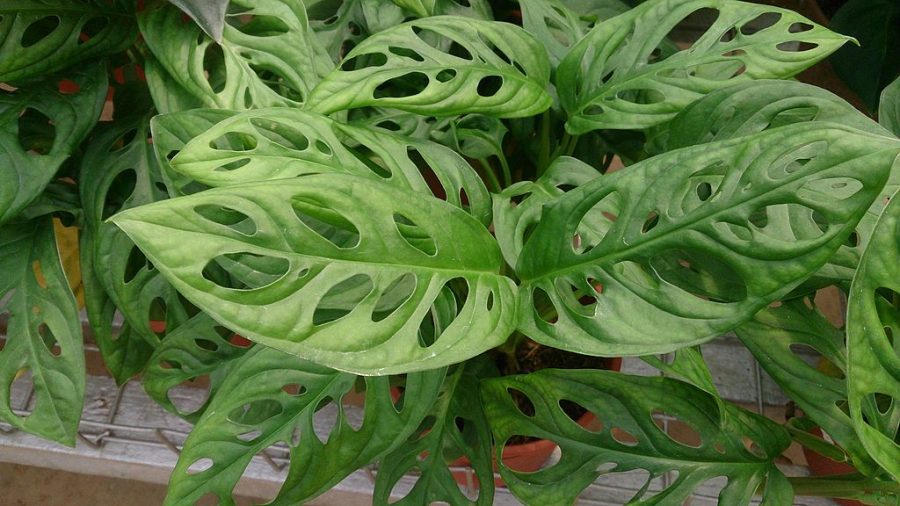
Light
Monstera obliqua thrives in bright, indirect light. Direct sunlight can damage its delicate leaves, so be sure to provide filtered sunlight or place your plant near an east or north-facing window.
Water
To keep your Monstera obliqua happy, maintain consistently moist soil. However, avoid letting the plant sit in water, as this can lead to root rot.
Allow the top inch or two of soil to dry out between waterings.
Soil
A well-draining, peat or coco-based potting mix is ideal for Monstera obliqua. This type of soil ensures that your plant’s roots receive the moisture and nutrients they need while preventing waterlogging.
Fertilizer
To support your Monstera obliqua’s growth, feed it with a balanced liquid fertilizer diluted to half-strength every 4-6 weeks during the growing season.
Reduce fertilizing during the winter months when the plant’s growth slows down.
Pruning
Regular pruning is essential for maintaining your Monstera obliqua’s shape and encouraging bushier growth.
Remove any yellow or damaged leaves, and trim back long vines to promote a fuller appearance.
Always use clean, sharp pruning shears to prevent the spread of disease and ensure your plant stays healthy and vibrant.
Monstera standleyana
Plant aficionados, get ready to welcome a charismatic member of the Monstera family: Monstera standleyana!
This distinctive, vining plant is affectionately known as the “Five Holes Plant” and boasts uniquely patterned leaves that add a touch of intrigue to any space.
With its striking appearance and easy-going nature, Monstera standleyana makes a fantastic addition to your ever-growing indoor jungle.
So, let’s embark on an exciting journey to uncover the secrets of this captivating plant and learn how to help it thrive in your home!
Exploring Monstera Standleyana: Description and Key Features
Cream-White Variegation
One of the standout features of Monstera standleyana is its cream-white variegation, which creates an eye-catching contrast against the deep green foliage. This striking pattern adds a unique and visually stunning element to your indoor plant collection.
Elongated Leaves
Monstera standleyana is known for its elongated leaves that taper to a point, giving the plant a sleek and elegant appearance.
The distinctive leaf shape combined with the plant’s intriguing variegation creates a captivating display that’s sure to turn heads.
Caring for Monstera Standleyana: Tips and Requirements
Light
Monstera standleyana prefers bright, indirect light to maintain its vibrant variegation. Direct sunlight can cause the delicate variegation to fade or even burn the leaves. Place your plant near an east or north-facing window to provide the optimal light conditions.
Water
Keep your Monstera standleyana’s soil consistently moist but not waterlogged. Allow the top inch or two of soil to dry out between waterings to prevent overwatering and potential root rot issues.
Soil
A well-draining, peat or coco coir-based potting mix is ideal for Monstera standleyana.
This type of soil ensures that the plant’s roots have access to the moisture and nutrients they need while preventing waterlogging.
Fertilizer
To support your Monstera standleyana’s growth, feed it with a balanced liquid fertilizer diluted to half-strength every 4-6 weeks during the growing season.
Reduce fertilizing during the winter months when the plant’s growth slows down.
Pruning
Regular pruning helps maintain your Monstera standleyana’s shape and encourages bushier growth.
Remove any yellow or damaged leaves, and trim back long vines to promote a fuller appearance.
Always use clean, sharp pruning shears to prevent the spread of disease and keep your plant healthy and thriving.
Monstera dubia
Attention, plant enthusiasts! Prepare to be captivated by the fascinating Monstera dubia, a distinctive member of the Monstera family that’s ready to steal the spotlight in your indoor jungle.
This intriguing plant, also known as the “Shingle Plant,” is cherished for its unique, flat-lying leaves that hug the surface they grow on, creating a stunning, shingle-like effect.
As we uncover the secrets of Monstera dubia, you’ll learn how to care for this extraordinary plant and make it a standout star in your home!
Unveiling Monstera Dubia: Description and Key Features
Shingle-like Growth Habit
Monstera dubia is known for its remarkable shingle-like growth habit, where its leaves lay flat and cling tightly to the surface they’re growing on.
This unique growth pattern creates a visually stunning display, making Monstera dubia a real conversation starter in any plant collection.
Variegated Juvenile Foliage
Adding to its appeal, Monstera dubia boasts variegated juvenile foliage.
The young leaves showcase an attractive pattern of light and dark green shades, further enhancing the plant’s charm and making it an irresistible addition to your indoor garden.
Monstera Dubia Care: Tips and Requirements
Light
To maintain Monstera dubia’s vibrant foliage, provide the plant with bright, indirect light.
Direct sunlight can cause the leaves to scorch, so make sure your plant receives filtered sunlight or is placed near an east or north-facing window.
Water
Monstera dubia prefers consistently moist soil, but it’s essential to avoid overwatering.
Allow the top inch or two of the soil to dry out between waterings to prevent root rot issues and keep your plant healthy.
Soil
A well-draining, peat-based potting mix is perfect for Monstera dubia.
This type of soil ensures that the plant’s roots have access to the moisture and nutrients they need while preventing waterlogging.
Fertilizer
To support your Monstera dubia’s growth, feed it with a balanced liquid fertilizer diluted to half-strength every 4-6 weeks during the growing season.
Reduce fertilizing during the winter months when the plant’s growth slows down.
Pruning
Regular pruning helps maintain your Monstera dubia’s shape and encourages healthy growth.
Remove any yellow or damaged leaves, and trim back long vines to promote a fuller appearance.
Always use clean, sharp pruning shears to prevent the spread of disease and ensure a thriving, happy plant.
Propagation techniques for Monstera plants
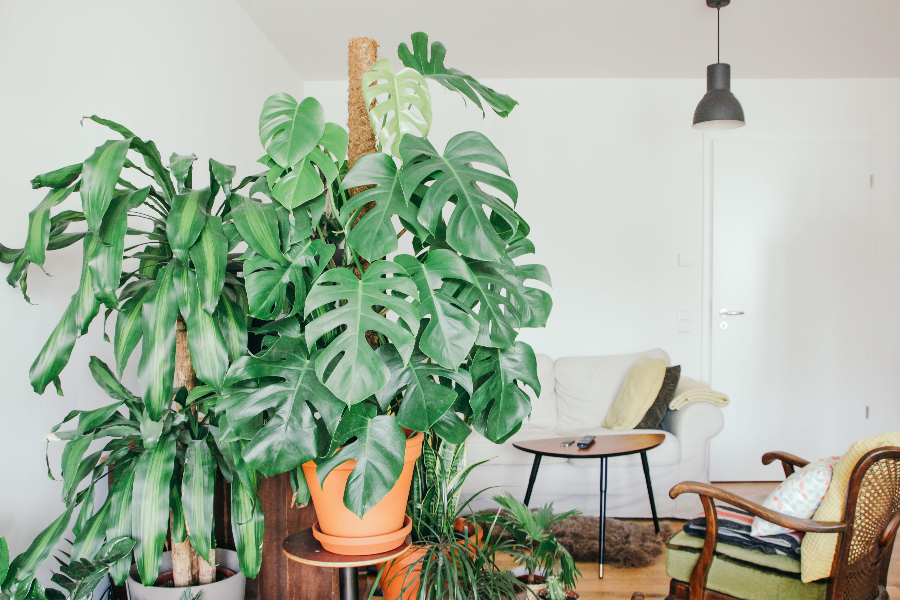
Hey there, fellow plant lovers! Are you ready to expand your Monstera family?
Well, you’re in luck because today, we’re diving into the world of Monstera propagation!
Whether you’re a seasoned green thumb or a budding plant enthusiast, you’ll find that propagating Monstera plants is an enjoyable and rewarding process.
So, let’s get ready to spread the Monstera magic by learning the most effective techniques to create happy, healthy baby Monsteras and multiply the lush, tropical vibes in your home!
Propagation by Stem Cuttings
One of the most popular and straightforward methods to propagate Monstera plants is through stem cuttings.
This technique involves taking a healthy stem cutting, ideally with a node or an aerial root, and placing it in water or soil to encourage root growth.
Here’s a step-by-step guide to ensure success:
• Choose a healthy stem with at least one node or aerial root.
• Make a clean cut below the node using a sterilized pair of pruning shears or a sharp knife.
• Remove any leaves close to the cutting’s base to prevent them from rotting.
• Place the cutting in a jar of water or directly in moist soil, ensuring the node or aerial root is submerged.
• Keep the cutting in a warm spot with bright, indirect light.
• Be patient! New roots should begin to grow within a few weeks.
Air Layering Propagation
Air layering is another propagation technique that can be used for Monstera plants, particularly for larger or more mature specimens.
This method involves encouraging root growth on the stem while it’s still attached to the mother plant. Follow these steps to air-layer your Monstera:
• Identify a healthy stem with a node or an aerial root.
• Make a small, upward-angled cut about one-third of the way through the stem, just below the node or aerial root.
• Insert a small piece of plastic or a toothpick into the cut to keep it open.
• Wrap the area with damp sphagnum moss, ensuring the moss covers the cut, node, or aerial root.
• Cover the moss with plastic wrap or a plastic bag, sealing it to retain moisture.
• After several weeks, roots should start to develop. Once a sufficient root system has formed, cut the stem below the newly rooted section and pot it up in well-draining soil.
Propagation by Division
Monstera plants can also be propagated by division, which involves separating the plant into smaller sections, each with its roots and leaves.
This method works best for mature plants that have developed multiple growth points. Follow these steps for successful division:
• Gently remove the mother plant from its pot, being careful not to damage the roots.
• Examine the root system and identify natural divisions or separate growth points.
• Using clean, sharp pruning shears, carefully cut through the roots to separate the plant into smaller sections.
• Replant each division in a pot with well-draining soil, making sure to provide adequate support for any aerial roots or climbing stems.
• Water the newly potted divisions and place them in a warm spot with bright, indirect light to help them acclimate to their new environment.
Common Monstera plant problems and solutions
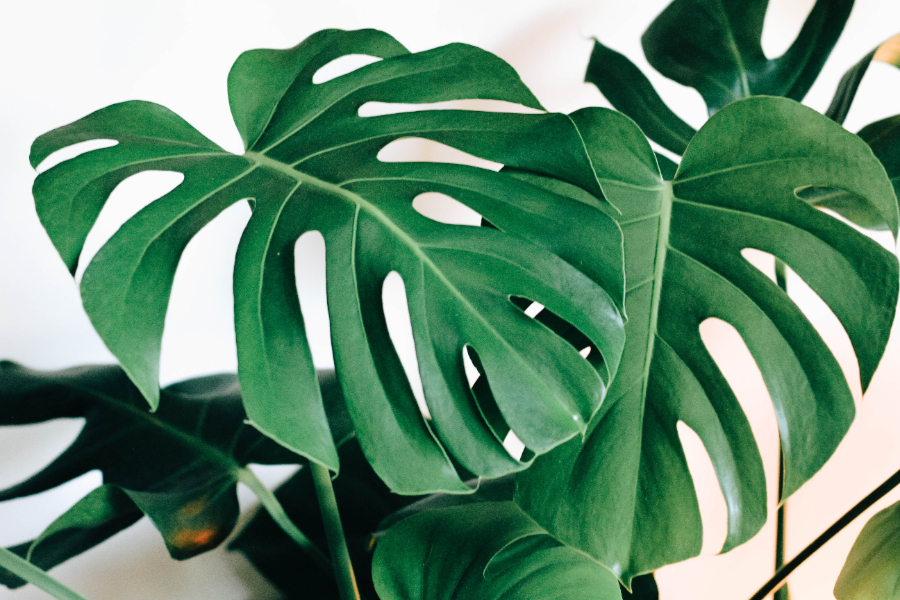
Hey Monstera lovers! Even though these tropical beauties are relatively easy to care for, they can sometimes face a few challenges.
But don’t worry, we’re here to help! In this section, we’ll be discussing common Monstera plant problems and providing practical solutions to keep your green friends healthy and thriving.
So, whether you’re a newbie plant owner or a seasoned horticulturist, let’s work together to ensure your Monstera plants stay happy, lush, and problem-free!
Yellow Leaves: Causes and Solutions
Overwatering
One of the most common causes of yellow leaves in Monstera plants is overwatering.
To prevent this issue, allow the top inch or two of soil to dry out between waterings and ensure that your pot has drainage holes to avoid waterlogging.
Solution:
Adjust your watering schedule and check the moisture level of the soil before watering. If necessary, repot your plant in fresh, well-draining soil.
Nutrient Deficiencies
Yellow leaves can also be a sign of nutrient deficiencies, particularly nitrogen or magnesium.
These deficiencies can be remedied with a balanced fertilizer or a specific nutrient supplement.
Solution:
Fertilize your plant with a balanced liquid fertilizer during the growing season, following the manufacturer’s instructions.
Alternatively, use a specific nutrient supplement to address the deficiency.
Root Rot: Prevention and Treatment
Prevention
Root rot is often caused by overwatering or poor drainage, which creates a damp environment that promotes fungal growth.
To prevent root rot, use a well-draining soil mix and avoid overwatering your Monstera plant.
Treatment
If you suspect root rot, gently remove the plant from its pot and examine the roots. Healthy roots should be firm and white or light tan.
Remove any mushy, discolored roots with a clean, sharp pair of pruning shears. Repot the plant in fresh, well-draining soil and adjust your watering schedule to prevent future occurrences.
Pests: Identification and Management
Common Pests
Monstera plants can sometimes be affected by pests like spider mites, mealybugs, and scale insects.
These pests can cause leaf damage and weaken the overall health of the plant.
Management
To manage pests, first, identify the type of pest affecting your Monstera. Once identified, apply an appropriate treatment:
• Spider mites: Wipe the leaves with a damp cloth to remove the mites, and then spray the plant with insecticidal soap or neem oil.
• Mealybugs: Remove visible bugs with a cotton swab dipped in rubbing alcohol, and then spray the plant with insecticidal soap or neem oil.
• Scale insects: Scrape off any visible insects with a toothpick or soft brush, and then treat the plant with insecticidal soap or neem oil.
Make sure to isolate the affected plant from other plants to prevent the spread of pests. Regularly inspect your Monstera for signs of infestation and treat as needed.
Repotting Monstera Plants: When and How to Do It Right
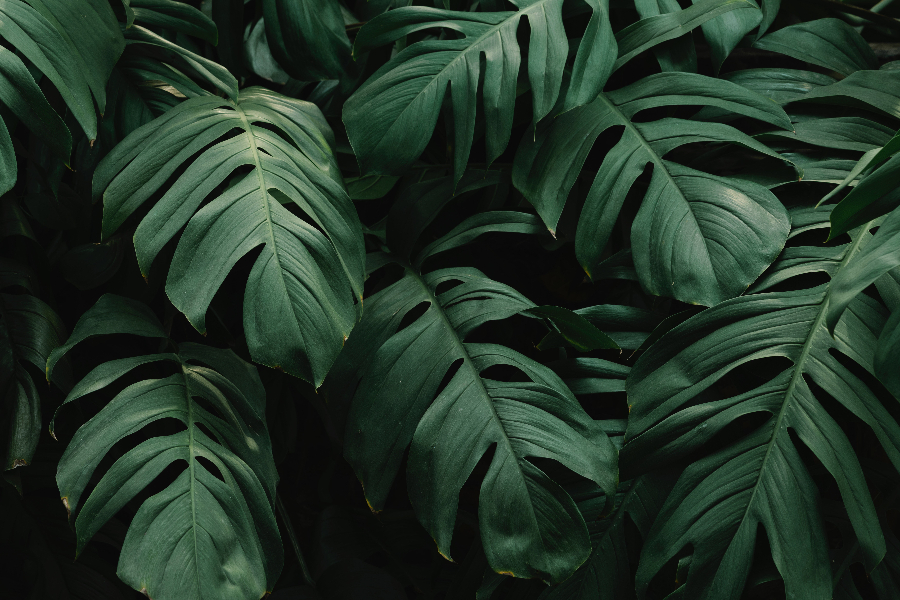
Repotting might seem like a daunting task, but it’s essential for maintaining the health and happiness of your Monstera plants.
In this section, we’ll guide you through the process of repotting your Monstera, so it can continue to thrive and grow.
We’ll discuss when it’s time for a new pot, how to choose the right one, and the steps to ensure a smooth transition for your beloved plant.
So, roll up your sleeves and let’s get ready to repot like a pro!
How Often to Repot Your Monstera
Monstera plants generally need to be repotted every 1-2 years, depending on their growth rate and the size of their current container.
Younger plants may need more frequent repotting as they grow quickly, while more mature plants may only require repotting every 2-3 years.
Signs Your Monstera Needs Repotting
Rootbound: If you notice roots circling the pot or growing out of the drainage holes, it’s a clear sign that your Monstera is rootbound and needs a larger pot.
Slow Growth: If your plant’s growth has slowed down significantly despite receiving proper care, it could be an indication that it’s running out of space and nutrients in its current pot.
Watering Issues: If water drains too quickly or the soil dries out rapidly, it might be because the roots have taken up most of the space in the pot, leaving little room for moisture retention.
Repotting Instructions
• Choose the Right Pot: Select a new pot that’s 1-2 inches larger in diameter than the current one. Make sure it has drainage holes to prevent waterlogging.
• Prepare the New Pot: Add a layer of well-draining potting mix to the bottom of the new pot.
You can use a mix specifically designed for Monsteras or make your own with peat-based soil, perlite, and orchid bark.
Coco coir and perlite are great for repotting too.
• Remove the Monstera: Gently remove the plant from its current pot by carefully tipping it on its side and supporting the base of the stem.
If the plant is firmly rootbound, you may need to tap or press the sides of the pot to loosen it.
• Inspect and Prune Roots: Examine the roots for any signs of rot or damage. Use clean, sharp pruning shears to remove any unhealthy roots.
• Place the Plant in the New Pot: Position the Monstera in the new pot, ensuring it sits at the same depth as it was in the previous container.
Fill in the spaces around the root ball with fresh potting mix, gently pressing the soil to eliminate air pockets.
• Water and Care: Water the newly repotted Monstera thoroughly, allowing the excess water to drain.
Place the plant in a warm spot with bright, indirect light and resume your regular care routine.
Avoid fertilizing for the first month after repotting to give the plant time to adjust to its new environment.
Monstera Plants FAQs
Navigating the world of Monstera plant care might seem like a daunting task, especially with its unique foliage and specific needs.
However, understanding some key care tips can help you cultivate a thriving Monstera indoors.
This guide will delve into frequently asked questions about Monstera plant care, providing the insights you need for a lush, healthy houseplant.
Q: How do you take care of a Monstera plant indoors?
A: Indoor Monstera plants require well-drained soil, indirect light, and a humid environment.
They also appreciate regular feeding during the growing season.
Q: How much light does a Monstera need?
A: Monstera plants thrive in bright, indirect light. Direct sunlight can scorch their leaves, while too little light can cause leggy growth and fewer fenestrations (those characteristic holes in the leaves).
Q: Where do you put Monstera in your house?
A: Place your Monstera in a location where it can receive bright, indirect light. A north or east-facing window is often ideal.
Ensure that the plant is not exposed to drafts or heat vents.
Q: How often should you water a Monstera?
A: Water your Monstera when the top 1-2 inches of soil feel dry to the touch.
Overwatering can lead to root rot, so it’s essential to let the soil dry out a bit between waterings.
Different Types of Monstera Plants: Final Thoughts
As we wrap up our journey through the fascinating world of Monstera plants, we hope you’ve enjoyed learning about the different types, their unique characteristics, and essential care tips.
With this knowledge in hand, you’re now ready to grow and care for your own collection of these stunning tropical beauties.
Remember, the key to a happy Monstera is understanding its needs and providing the right environment for it to thrive.
So go forth, fellow plant enthusiasts, and may your Monsteras flourish and bring joy to your space for years to come!
Recap of the Different Types of Monstera Plants
We’ve explored a variety of captivating Monstera plants, including the popular Monstera deliciosa, the charming Monstera adansonii, the elegant Monstera siltepecana, the rare Monstera obliqua, the stunning Monstera standleyana, the unique Monstera dubia, and many more.
Each type has its distinct features, growth habits, and care requirements, offering something for every plant lover.
Explore and Enjoy Monstera Plants in Your Own Home
With so many intriguing Monstera varieties available, there’s a perfect plant waiting to join your home.
Don’t be afraid to try your hand at growing and caring for these tropical wonders, as they can bring life, beauty, and joy to your space.
Embrace your green thumb and dive into the world of Monstera plants, discovering the unique characteristics and rewards of each variety. Happy planting, and enjoy the lush foliage and captivating charm of these incredible plants!
Read more about the Benefits Of Keeping Indoor Plants

